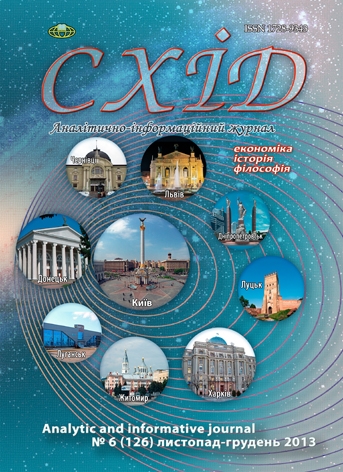Approaches for estimating the degree of depression of a territory (a region)
DOI:
https://doi.org/10.21847/1728-9343.2013.6(126).20629Keywords:
post-industrial coal area, the degree of depression, cluster analysis, indicators of development areasAbstract
This study focuses on the definition of regions in post-industrial areas (Old Industrial Cities) and the method of cluster analysis as the technique for estimating the degree of depression of a coal region.
At times of global economic crisis, it makes sense to study the economic experience of depressed regions, dominated by mono product economies, in order to assess ways to overcome the consequences of the crisis.
Downloads
References
Bandman M. K., Burmatova O. P., Vorobiova V. V., Ionova V. D., Klistorin V. I., Kriger V. E., Malinoskaya M. A., Malov Y. V., Suspitsin S. A. (1988), Structure and Content of Typical Conditions of the Regional Mesomodel, Territorial Production Complexes: Pre-Planning Research, Chapter 2, Nauka, Sibirean Branch, Novosibirsk, pp. 35-48.
Marshalova A. S., Guzner S. S. (2002), Experience of Implementation of Regional Projects in Social Region: Problems of Planning and Managemen, Novosibirsk, pp. 235-363.
Sitro K.A., Yagolnitser М. А. (2002), The Role of Mineral Stock Sector in Russian Economy, ECO, 7, P. 89.
Tatarkin A. I., Tatarkin D. A. (2009), International Financial Crisis and the Possibilities of Real Sector of Russian Economy, Economy and Taxe, 3, pp. 77-96.
Tsvetkova S. N. (2008), Coal Mining Region in Post-Restructuration Period, Region: Economy and Social Science, 3, p. 26.
Downloads
Published
How to Cite
Issue
Section
License
Copyright (c) 2014 Anna Chechel, Sergei Konoplyov

This work is licensed under a Creative Commons Attribution-NonCommercial-NoDerivatives 4.0 International License.
1. Authors bear responsibility for the accuracy of facts, quotations, numbers and names used.
2. Manuscripts are not sent back.
3. The publisher does not always agree with the authors' opinion.
4. The authors reserve the right to authorship of the work and pass the first publication right of this work to the journal under the terms of a Creative Commons Attribution-NonCommercial-NoDerivatives 4.0 International License. This license allows others to distribute (copy) the published work for non-commercial purposes, provided there is mandatory attribution to its authors and a link to the first publication in our journal.
5. The authors have the right to conclude separate supplement agreements that relate to non-exclusive work distribution in the form in which it has been published by the journal (for example, to upload the work to the online storage of the journal or publish it as part of a monograph), provided that the reference to the first publication of the work in this journal is included.

